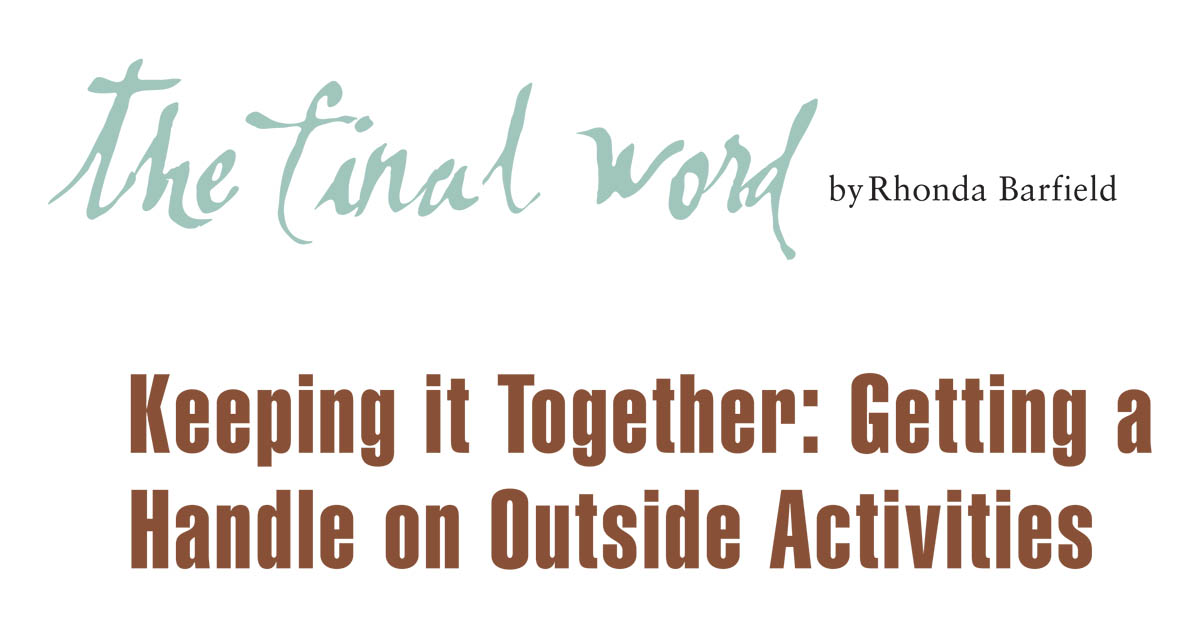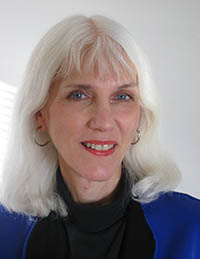Keeping It Together: Getting a Handle on Outside Activities
By Rhonda Barfield
Printed in Practical Homeschooling #100, 2011.
 Managing outside activities so that they enhance, but don't interfere with homeschool
Managing outside activities so that they enhance, but don't interfere with homeschool

| 
|

Every August, I used to
feel uneasy about the upcoming school year’s extracurricular activities.
What if I failed to enroll our children in something really important that might propel them toward
a fulfilling career? Maybe they wouldn’t get enough exercise if we avoided organized sports teams.
Maybe Boy Scouts and speech class and ballet and youth group might prove essential to their
well-being. How was I to decide on the best outside-homeschool activities?
Through 20 years of homeschooling, I discovered some practical helps.
I learned to look for activities that involved everyone. When our four kids were young, I helped
start a monthly co-op of several families who met for seasonal play/school dates, mostly with
babies, preschoolers, and young children. Later, we participated in clubs geared toward elementary
and middle school that also included little ones.
A few years later, we joined a large homeschool fine arts center that held classes for all ages
every Thursday. While Eric played piano with an 8:15 a.m. chamber ensemble, Christian, Lisa, and
Mary socialized and I helped set up a free “swap and shop” table. At 9:30, all four participated in
skill-appropriate orchestras at the same time I taught a keyboard class. At 10:45, they sang in
choirs while I accompanied. And in the afternoon, while I relaxed, they enjoyed drama classes.
Activities like these, which involved all of us on the same day, saved me hours of driving and
commitment.
When possible, we did it ourselves. I gave our four children their piano lessons and Michael
offered basic art instruction. When Lisa was interested in dance, we checked out several library
books and videos to see if she was serious about it before signing her up for expensive lessons.
Christian and Lisa formed their own birding club. Michael started Christian and Mary on coin
collecting and sometimes drove them to a coin store. We took their interests seriously, but eased
into them before investing a lot of time and money.
Instead of heading in separate directions to participate in community service projects,
we focused on our immediate family: my mother as she
struggled with Alzheimer’s and my dad, deteriorating into
dementia. Since Grandma and Grandpa lived three hours northeast of us, this involved frequent family
trips on weekends. We used those times to visit bird sanctuaries, playgrounds, parks, rivers, and
other fun places, and our kids also learned how to care for elderly relatives. As we “did it
ourselves,” we spent time together and grew closer.
We set limits. I once volunteered to head a children’s art show at our church, especially since I
wanted to encourage my own children to enter. From the start, I made it clear that I’d get involved
only as a one-woman organizer. This worked for a while. Then I started getting pressure from another
parent to make the show more elaborate and involve her in planning it. I was able to refuse this
direction because I knew it would take too much of my time.
That’s why, for many years, Michael and I made a rule of
one outside individual activity per child. We
considered the average time involved in, say, sports. When Eric played football for four
years, we had to commit to two weekly, two-hour practices plus a weekend game that we all attended.
If we’d multiplied that times four, I knew I’d find all my free time taken up by driving and
waiting. For me, burnout would have been inevitable unless I’d set limits.
Throughout our homeschool journey, all four kids participated in several extracurriculars, some of
them for several years. They didn’t do everything—who can? Still, our family enjoyed a well-balanced
mix of academics and outside activities. By following a few guidelines, we found it possible to
provide a rich environment for outside-of-school learning and still keep our sanity.